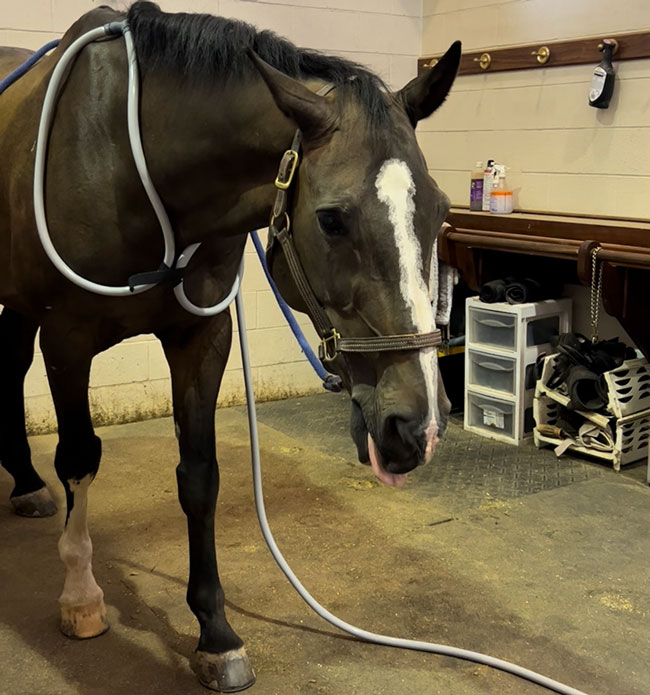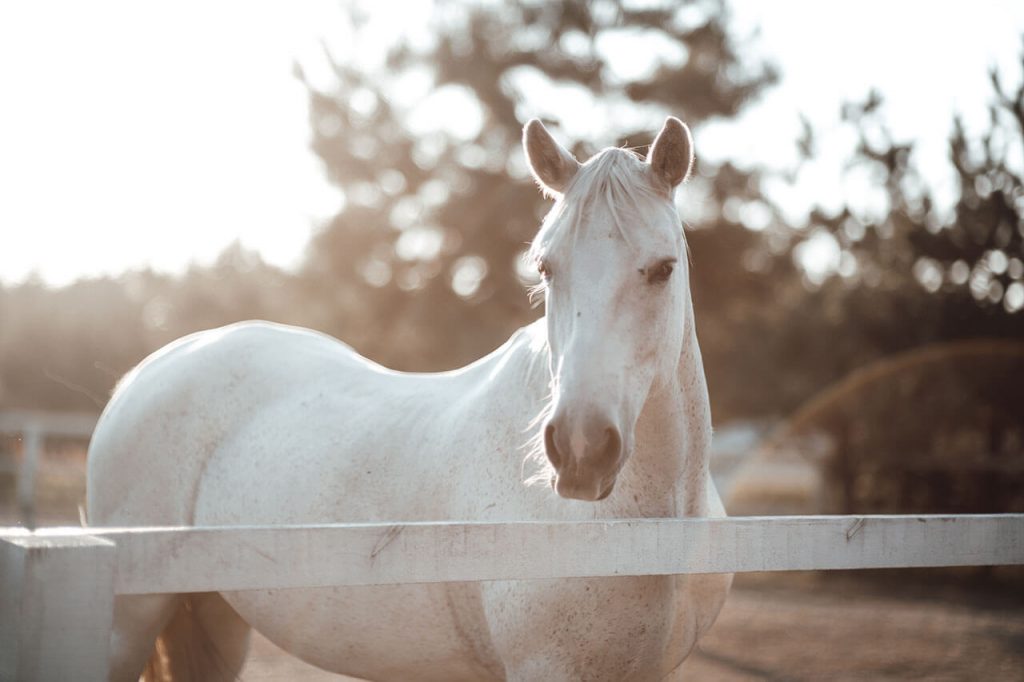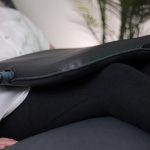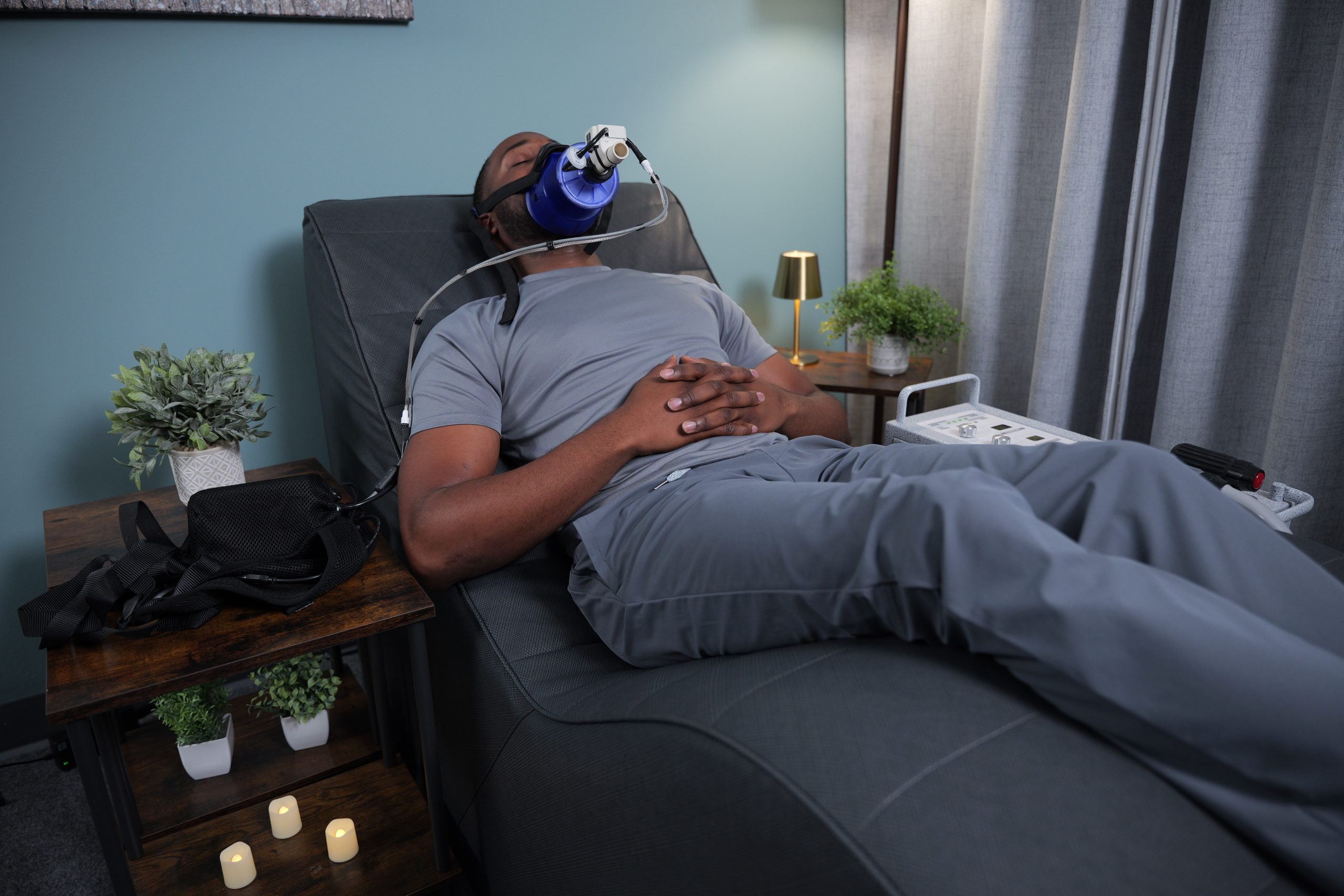Equine Relaxation
Relaxation starts in the horse’s brain. Their autonomic nervous system consists of a sympathetic nervous system, for fight-or-flight, and a parasympathetic nervous system, for rest-and-digest.
Horse's Nervous System
The sympathetic nervous system increases their heart rate, blood pressure, and body temperature. It stimulates the sweat glands and also increases breathing rates and circulation to the skeletal muscle. In essence, it prepares the horse to either defend itself or run away from any threats.

Stage of Relaxation
Cautious
Horses that are still on-alert will present with their ears forward, eyes wide with the whites slightly showing, and their head elevated. They might even be noticeably antsy in the cross-ties or not want to stand still.

Acceptance
At some point, the horse will move into an acceptance stage. Their ears may remain forward or alternate, one ear back or to the side, as they listen to their surroundings and you. Their head should start to lower, telling you while they aren’t fully relaxed, they are accepting the situation and yielding gracefully.
Relaxation
Finally, the horse will relax and drop their head. At this stage, the horse’s eyes should soften or look sleepy. You may notice the horse drops one of its hips and relaxes one back foot on its toe. Most horses who have reached this stage will eventually begin to fall asleep.


Pulsing for Equine Relaxation

Intensity
Let the horse’s reactions inform the intensity you choose. Adjust your session plan to the size, needs, and overall health of the horse. And, as a general rule, don’t apply Pulse at a high intensity around recent injuries or where the horse may be sore.
Remember that, if you’re using two accessories at once on an Pulse XL Pro, EQ-X1, or X1, the machine splits the power between both accessories. This means you will need to increase the intensity to accommodate the split.
Starting the Session
Start With Your Body Language
First, present yourself with the body language you would like for the horse to mirror. Approach the horse with a soft tone of voice and conservative movements. This invites them to share in the relaxation with us.
Getting Started
Turn the dial up until you see a faint pulsing on the horse’s skin. You should start observing some signs of release like deep breaths, licking and chewing, and lowering of the head. If you turn up the dial too high, the horse may raise their head, widen their eyes, or become fidgety. Pay careful attention to these signals!
Maintaining Relaxation
As the session continues, the horse will move between the relaxed and acceptance stages. The horse may also revert to a cautious stage while evaluating whether they feel threatened.
One strategy can help you maintain the relaxed stage for longer. Turn the dial down prior to moving the loops to a new position or doubling the loops over an area. This will help you avoid surprising the horse with a higher intensity or a similar intensity on a sensitive area.












